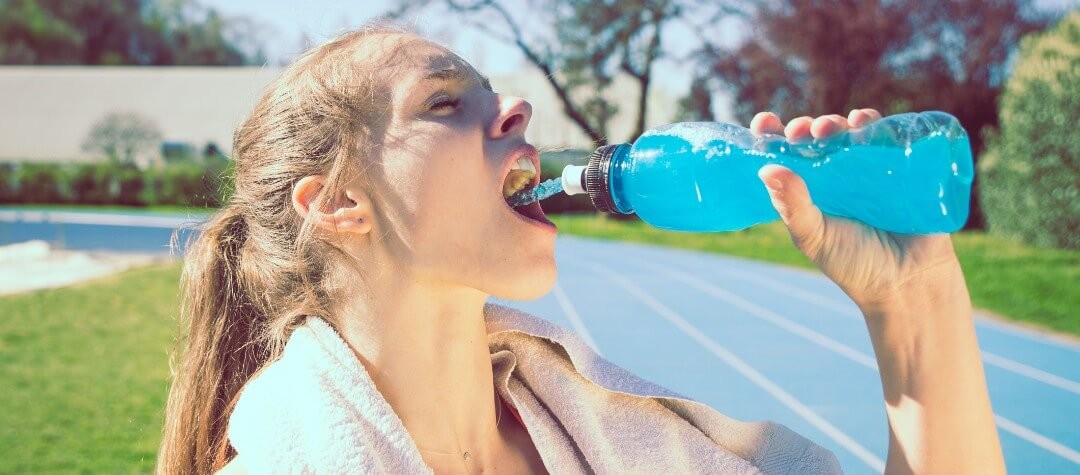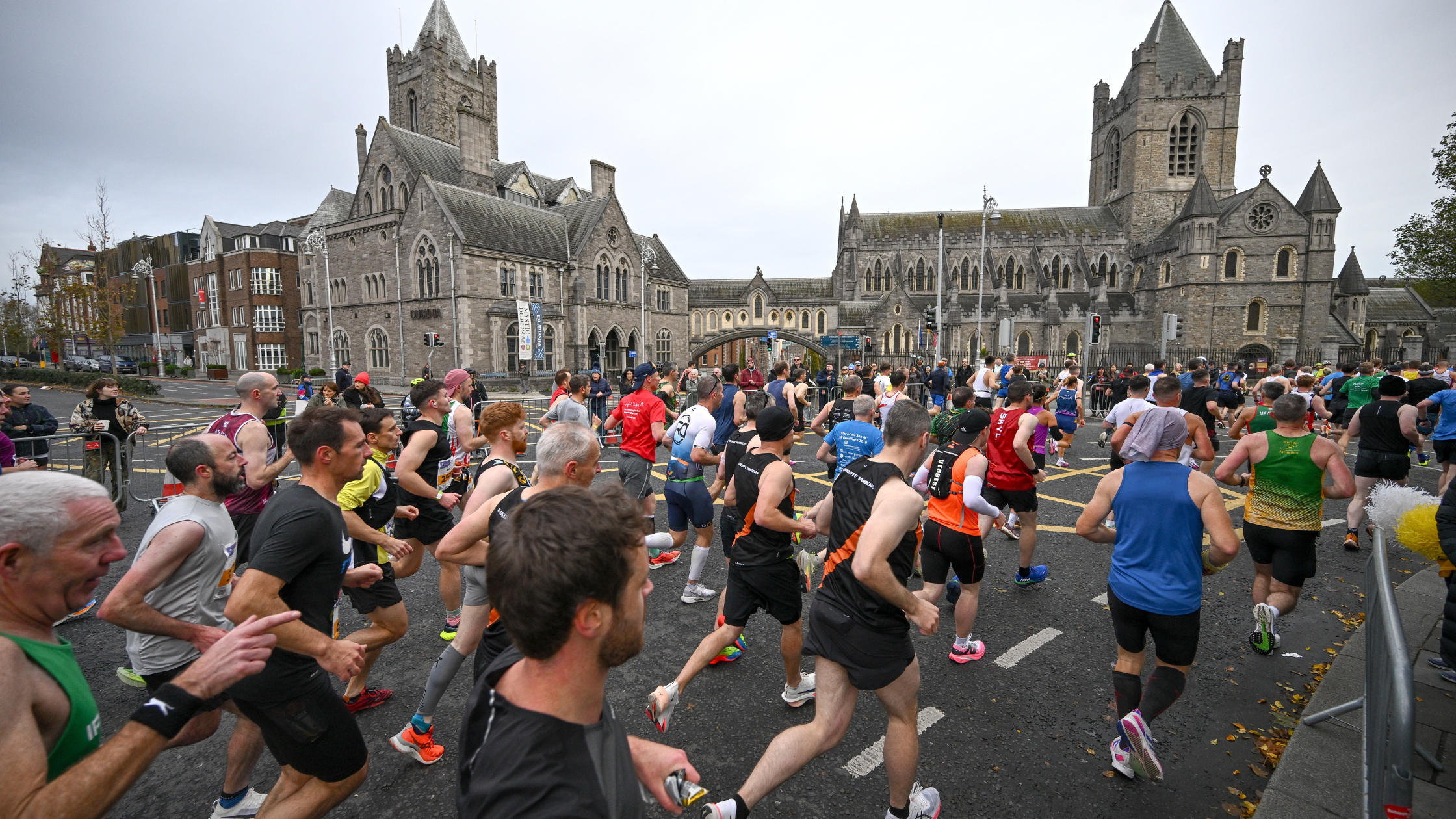Making sure you eat and drink the right kind of food/drinks to support your training is crucial. It’s like putting the right kind of fuel in a car. If you put diesel in a petrol car, it won’t start and you need to view your body in much the same way. Make sure you take good care of yourself and your nutrition through this time to help you maximise your performance.
1. General diet
Your diet needs to be balanced and healthy with carbohydrates making up around two thirds of it, with fats and proteins filling in the rest. This is how you build your nutritional foundations, but how do you build on top of that by refuelling either before a run or on the go?
Before you head out the door, think about how far you’re planning to run and then do some basic maths. In terms of fuelling up for a long run, say in excess of 75 minutes, you need to be looking to consume around 1g of carbohydrate for every 1kg (2lbs) of body weight, then multiply that by the number of hours you have before your run. Coffee is another great way to get you going ahead of a long run. It is a stimulant, so you’ll be mentally alert, but it is also increases the body’s fat conversion, so your glycogen is protected for longer.
2. Sports drinks
When your run is underway, some runners prefer to stick to good old fashioned water, while other prefer sports drinks, which contain electrolytes, low levels of sodium and carbohydrates. A lot of runners sweat profusely during their workouts, while others don’t. The amount of fluid you need to take on will vary as a result, but for a runner who sweats a lot, sports drinks might be the way to go to replace the electrolytes you’re losing.
You should be looking to take on board 120-240ml (4-8 oz) of fluid every 20 minutes in races/runs lasting over an hour.
There are lots of things to consider when choosing a sports drink, but taste is one of the most important elements. Find a flavour that suits you. That way you’re more likely to drink more of it than water which may help you stay hydrated. You should be looking to take on board 120-240ml (4-8 oz) of fluid every 20 minutes in races/runs lasting over an hour.
An alternative is hydration tablets or powders which you can add to water and help you rehydrate and replenish lost electrolytes. They are really simple to use, just drop a tablet or pour the powder into your water bottle and wait for it to dissolve.
3. Energy gels
Gels are another way of refuelling on the go. There are hundreds of gels and similar products on the market today and sometimes it’s more exhausting trying to work out which one to use than it is doing the exercise. The reason why we’ve changed our refuelling habits in recent years is because sports science has told us so much more about our bodies and what we need to successfully exercise. We know the body burns fat and carbohydrate when we exercise. The trouble is we only store a limited amount of carbohydrate in our muscles (glycogen) and when that runs out on a very long run, it needs replenishing. That’s where energy gels come in because it’s their job to replenish depleted stores of glycogen.
But it’s not quite that straightforward because gels don’t act as a like for like replacement. Your body needs time to process the gel and convert it into glycogen, which means the timing of your gels is important. It’s best to use them early on in a race, as they can unsettle your stomach later on. The gels are absorbed into your bloodstream as sugar initially and then they are fed to your muscles.
We’re all different, so the rate at which this absorption occurs will vary. The best way to approach it is to have a gel in the first 45 minutes of your long run and then wait around an hour for the next one. You can maintain that strategy for the duration of your run, but remember that for some runners, their stomachs effectively shut down in the latter stages of races or long runs because of fatigue.
Don’t suddenly decide to use gels on race day without trying them in advance.
As a result they can’t digest the gel and it can sometimes be regurgitated or force an emergency comfort stop. The key word here is practice. Don’t suddenly decide to use gels on race day without trying them in advance. There’s plenty of choice when it comes to flavour, so find one that works best for you and is convenient to open on the run.
As has been said, gels are notorious for unsettling the stomach and the last thing you need on race day, is the onset of runner’s tummy. And remember you must take them with water and not with an energy or sports drink. The water assists their digestion so if you take them with something else, they take longer to digest and it will feel a bit like eating raw sugar.
4. Snacks on the go
Depending on the length of your workout, you may have to eat something while you are on the move. Take something healthy with you like a banana, or an energy bar, even some dried fruit or jelly babies. The fruit will give you carbs and energy and the glucose in the sweets will provide a sugar boost.
Energy bars are generally made up of carbohydrates, protein and fats, and are a convenient way of fuelling the go. There are some nutritional energy bars which are are made from all natural ingredients that are intended to sustain energy levels, rather than providing the quick burst of energy. Bars containing honey are a good ingredient option if you’re looking for both fast and long-lasting fuel, as it contains glucose and fructose. Glucose releases energy quickly whereas fructose releases energy more slowly.
5. Post-run snacks
When you’ve finished your workout you need to be thinking about a high carbohydrate snack within half an hour. There are a huge variety of options at this stage, but some runners like to go for a snack bar or an energy bar. Others prefer some fruit or dried fruit, but if you fancy, some toast with peanut butter would do the trick.
According to triathlete Cindy Sherwin; "What you're looking to do is replenish your glycogen stores so you can be ready for your next workout. The maximal uptake of glucose is in those first 30 minutes after your run."
Protein bars are a good option post-run and provide the body with protein and amino acids , which are needed for muscle repair and recovery. Protein bars should generally be used as a post-exercise snack after your long run, rather as a fuel when on your run.
6. Recovery and protein drinks
For those runners who don’t like to eat right after exercise, a drink packed with the right kind of ingredients will do the trick. Chocolate milk or a homemade fruit smoothie could also be a potential option here. Recovery and protein drinks are a new addition to the runner’s arsenal of refuelling options. They are high in carbohydrate but also contain protein, vitamins and electrolytes.
Runners should ideally go for a drink that is consists of a 3:1 ratio of carbohydrates to protein to replenish the body’s glycogen stores. A protein drink can be a convenient solution to refuelling after a long run and are a popular way of recovering lost vitamins, minerals and glycogen.















